INFRASTRUCTURE AND PUBLIC WORKS IN JAPAN
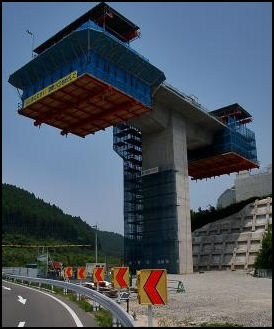
expensive highway project As of 2003, Japan spent $208 billion a year on public works projects such as highways, tunnels, dams and bridges. Construction consumes 40 percent of the national budget.
The Japanese government seems to have never met a public works project it didn't like. But the costs can be astronomical. Each year Japan spends more money on public works than was spent to build the entire Panama Canal. Osaka Bay has eight artificial islands and 95 percent of its 160-kilometer shoreline is reclaimed land. There are also large amounts of reclaimed land in Saga Prefecture.
The spending has been a contributor to a national debt that reached $6.4 trillion in 2003 and has taken money away from research and developments which could spark economic growth.
Over $2 trillion was spent on infrastructure projects in the 1990s, which some credit with staving off economic collapse. Richard Koo, an economic advisor to the LDP at the Nomura Research Institute, told the Washington Post, “You can bash public works all you want, but in this type of recession where companies and individuals have stopped spending, government expenditures become absolutely essential. We need speed more than anything in responding to this crisis...Our unemployment never went above 5.5 percent. Public works was an extremely effective fiscal stimulus even though a few projects were really stupid.”
Good Websites and Sources: Good Construction Photos at Japan-Photo Archive japan-photo.de ; Ministry of Land, Infrastructure, Transport and Tourism mlit.go.jp ; E-book: Japan Under Construction, Corruption, Politics, Public Works e-book escholarship.org ; New York Times article on Public Works as a Stimulus Measure nytimes.com ; Evaluation of Infrastructure pdf file Japan Society of Civil Engineers ; Public Works in Japan newslet.iss.u-tokyo.ac.jp ;NPR Story on Public Works and the Environment npr.org/templates/story
Major Public Works Projects: Seikan Rail Tunnel, WikipediaWikipedia ; Seikan Tunnel Aomori Government Map: Japan Lifestyle Japan Lifestyle ; Japan Visitor Japan Visitor ; Bridges and Dams Seto Ohashi Bridge (near Okayama)Wikipedia Wikipedia ; Akashi Kaikyo Bridge (near Kobe) Wikipedia Wikipedia ; Thirty Year History of High Roller Concrete Dams in Japan pdf file pwri.go.jp/eng/activity/pdf
Links in this Website: OIL, COAL, NATURAL GAS AND ENERGY IN JAPAN Factsanddetails.com/Japan ; NUCLEAR ENERGY IN JAPAN Factsanddetails.com/Japan ; SOLAR, WIND AND ALTERNATIVE ENERGY IN JAPAN Factsanddetails.com/Japan ; URBAN TRANSPORTATION IN JAPAN Factsanddetails.com/Japan ; TRAINS IN JAPAN Factsanddetails.com/Japan ; SHINKANSEN (JAPANESE BULLET TRAINS) Factsanddetails.com/Japan ;
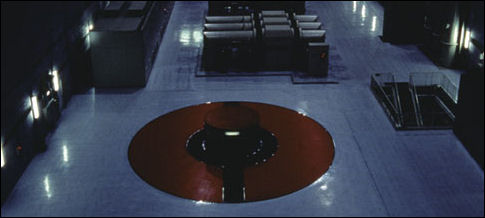
Hydro Power
History of Public Works Projects in Japan
After World War II, the Japanese government funded many much needed public works projects that established one of the world's best infrastructures.
Kakuei Tanaka, the prime minister of Japan in the 1960s and 70s, was nicknamed the "Human Bulldozer" for his fondness for expensive public works projects including one system of roads that allowed him to drive from his office in Tokyo to his office in Niigata, a journey of four hours, making only three turns. Under his stewardship 10-year public works expenditures tripled from $37 billion to $105 billion.
By the 1980s most of the useful projects had been built. Then the government began funding unnecessary projects to provide employment in rural areas, where political power is proportionally higher than in urban areas, and provided contracts to construction companies the provide support and kickbacks to the ruling political party.
In the 1990s, the government turned to public works projects as a way of spending Japan out of recession, a Keynsian strategy that did not work. A total of 163 public corporations spent $50 billion a year of the taxpayers money and sucked up 40 percent of the national budget, with construction accounting for 9 percent Japan's GNP, compared 1 percent in the United States and 5 percent in Europe.
Dams in Japan

There are lots of dams in Japan. They have been built to generate electricity, control floods and provide irrigation water for agriculture. Japan uses it water supplies very cleverly. Often getting energy, irrigation water, and drinking water from the same dam. Even so many Japanese feel there are too many dams and environmental groups have joined with farmers worried about having their land submerged to protest the construction of new dams.
Share of the worlds dams: 1) China (45 percent); 2) the United States (14 percent); 3) India (9 percent); 4) Japan (6 percent); Other countries (26 percent).
Some prefectures have announced a cessation of all dam projects after they were deemed unnecessary for water supplies and flood control. A concrete dam proposed for a major river in Kumamoto was axed by the governor there on the grounds that it world upset the flow of rivers there that attract large numbers of tourists and fishermen seeking ayu sweetfish. See Nagano mayor.
In 2008, Japan announced plans to build 182 new hydroelectric projects by 2030, up from the 38 it had originally projected, to create construction jobs and boost total hydroelectric power generation to 78.1 billion kilowatt hours.
Tokuyama Dam, Japan’s largest dam in term of water capacity, was opened in May 2008. Plans for the dam, which can hold 650 million tons of water, were announced in 1957 though construction did not begin until 2000. The dam cost $3.5 billion.
Some expensive dams have been white elephants. The $380 million Togo dam north of Furano in Hokkaido was built between 1977 and 1993 to hold back 4.3 million tons of water to be used in agriculture. Unfortunately though it began leaking after it opened through the loose volcanic soil at the base of the dam. Much of the money to build the dam came from local sources. Local farmers are angry. The repair bill has been estimated to be around $120 million.
See Hydropower Under Alternative Energies Under Energy
Bridges in Japan
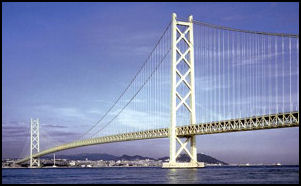
Akashi-Kaikyo Bridge The Akashi Kaikyo Bridge (7 miles west of Kobe) is the world's longest suspension bridge. Opened in April 1998 and connecting Kobe with Awaji-shima island, it is a 3,911 meters long, a few meters longer than the Great Belt Connection (connecting the islands of Funen and Zealand in Denmark), completed in 1999. The Akashi Kaikyo Bridge has been designed to resist powerful earthquakes and typhoons. Illuminated at night, it is a breathtaking sight referred to as the "Pearl bridge".
The world’s 10 longest suspension bridges (length and year completed as of 2007): 1) Akashi-Kaikyo Bridge, Japan (1991 meters, 6,529 feet, 1998); 2) Great Belt Bridge, Denmark (1,624 meters, 5,328 feet, 1998); 3) Runyang Bridge, China (1,490 meters, 4,888 feet, 2005); 4) Humber Bridge, Britain (1,410 meters, 4,626 feet, 1981); 5) Jiangyin Bridge, China (1,385 meters, 4,543 feet, 1999); 6) Tsing Ma Bridge, Hong Kong (1,377 meters, 4,518 feet, 1997); 7) Verrazano-Narrows Bridge, New York (1,298 meters, 4,260 feet, 1964); 8) Golden Gate Bridge, San Francisco (1,280 meters, 4,200 feet, 1937); 9) Hogakustenbron, Sweden (1,210 meters, 3,970 feet, 1997); 10) Mackinac Bridge. Michigan (1,158 meters, 3,800 feet, 1957).
The Shimanami Route (between Onomichi on Honshu and Imbari on Shikoku) is 59-kilometer route with 10 suspension bridges of varying size that connect the main island Honshu (Hiroshima Prefecture) and Shikoku (Ehime Prefecture) and nine small islands in between. Opened in May 1999, it cost of $7 billion and the lives of seven men. The Shimanami Route includes the Tatara Bridge, which connects Ikuchi-jima and Omishima islands, the world's longest cable-styled bridge; and the 4,045-meter Kurushima Kaiyo Bridge, the first bridge in the world with three suspended sections.
Tunnels in Japan
The longest tunnel in the world is the 33.5-mile-long Seikan Tunnel under the Tsugaru Strait between the main Japanese island of Honshu and the largest island in the north, Hokkaido. The tunnels is nearly twice as long as any railroad tunnel constructed before it. The project began in 1964. Thirty-four men were killed before it was finished in 1988. Work began at both ends, with construction workers drilled and blasting through volcanic rock 800 feet below the turbulent Tsugaru Strait.
In 1984, a 50,000-ton wedge of rock broke through the roof of a tunnel bored through a volcanic mountain on Hokkaido. The rock crushed a bus with 19 people on board and a car with a single occupant. There were no survivors in those vehicles.
In June 1999, a chunk of concrete fell from a tunnel in Fukuoka Prefecture and hit a passing train, causing the closing of the Shinkanensen. A survey after the accident found defects in more than half the highway tunnels and 20 percent of the highway bridges investigated.
There has been some discussion of building a tunnel between Kyushu in Japan and South Korea. It would be over 200 kilometers long and require engineering feats like those used to build the Chunnel; under the English Channel. If it were to be built it would be the deepest and longest tunnel im the world. One plan calls for the construction of three undersea tunnels linked by two small islands. The final stretch would be over 70 kilometers long and 140 meters deep. Such a project would take 10,000 workers 10 years to completer at an estimated cost of $25 billion. One person who has said he would back the project is the Rev. Sun Myung Moon.
The Kammon Tunnel, connecting Honshu with Kyushu, was the world’s first undersea tunnel. Completed in 1958, it is 3,461 meters long and connects Fukuoka on Kyushu with Shimonoseki in Honshu.
See Aqualine Below. Airports. See Air Travel Under Transportation
Unnecessary Public Works Projects in Japan

cement river The Japanese government has built grand dams, bridges, railways and roads, plus countless smaller projects, that Japan doesn't really need. Cities are full of vacant public buildings and government-funded museums and concert halls that no one uses. In the countryside there are expensive government-funded projects that have been dubbed tunnels and bridges to nowhere. Much of money to pay for the bridges nowhere comes from the postal saving system, pension contributions, bonds and postal life insurance premiums — one of the primary reasons Japan has the highest debt to GDP ratio in the developed world.
The government has funded multi-billion dollar bullet trains, expressways and bridges that serve only a few people, gigantic overpasses that provide access to small country lanes, useless dams, and "airports for radishes.” There are airports with no planes that pay passengers to use them and deep-water ports with no ships. Over 60 percent of Japan's coastline and the riverbeds of many major river bank are fortified or covered with concrete that serves little purpose other than to create ugliness.
The 177-mile-long, $83 billion Daini Tomei highway near Mt. Fuji boasts huge concrete supports, decorative gratings and stainless steel phone boxes that cost $23,000 each. It is being built parallel to an existing highway with a traffic load that has been steadily declining for years. The projects includes new secondary roads linked to the highway and new industrial projects built at a cost of $2.6 billion. Local people oppose the project which has continued to be built due to the presence of local politicians in key construction ministries. Activists that have opposed the project have received death threats.
In one village on remote Tsushima Island $5 million was spent to reclaim a land the size of five football fields and build a day cay center and a gateball field (croquet) field even though only 282 people live in the village and there is lots of undeveloped land on the island.
Some of projects have caused severe environmental damage. The sealing off of Isahay Bay (near Nagasaki), Japan's largest wetland, caused a huge clam kill and destroyed the local seaweed industry. In Hokkaido a dam submerged sacred Ainu ritual sites.
More Unnecessary Public Works Projects in Japan
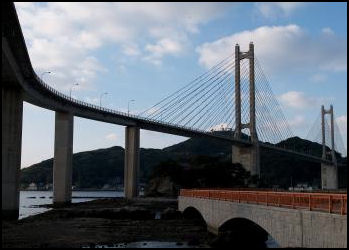
bridge to thinly-populated island Over $2.5 million is being spent on pier project on tiny Akashima island which has only five residents. The government also provides a $500,000 annual subsidy for a ferry to the island and has spent a considerable sum of to lay down undersea cables that bring electricity to the island.
On a mountain near the northern city of Yamagata there is a $165 million stretch of road that begins and ends with dirt tracks. In Nagoya, there is a $140 million art museum that was so expensive they had no money left over to purchase any art. As of the early 2000s it contained only three works of art.
A new airport is being built at a cost of $1.73 billion in the Mt. Fuji area that will cut only 30 minutes off the ride to three other airports. Planners claim that the airport will serve 5 million passengers. Experts say the true figure is more like 350,000. An even more expensive airport was built on land reclaimed form the sea at Kobe even though it is close to airports in nearby Osaka. One airport in Ishkawa sees so few planes it offers passengers $18 to use it.
Shikabe, Hokkaido, a small, politically-connected, coastal town with only 4,856 residents, boasts newly paved roads, a, heated indoor swimming pool, a new garbage recycling plant, a car and driver for the mayor, a $3.8 million park, and a new $33 million “hygienic management” port, designed primarily to protect freshly caught squid from gull droppings — all paid for with money from the national government in Tokyo.
A new bridges opened in Achene in 2005 is touted as being the world’s longest toll-free bridge, It is extend for 1.9 kilometers to Kourijima Island and cost ¥27.4 billion ye, The island it serves only has a population of 361.
See Shinkasen, Nagano Shinkasen, Transportation, Trains
Aqua-Line
One of the most wasteful projects is the Aqua-Line, a 15.1 tunnel-bridge that runs under Tokyo Bay between the Tokyo side of the bay and the Chiba side. It was built at a cost of ¥1.4 trillion — about $1 million a meter — over 10 years — and embraces a shopping complex that looks likes a cruise ship and huge shock absorbers to help the complex to weather earthquakes and typhoons. It opened in 1997, but is largely unused because few people want to fork over the expensive toll.
The Tokyo Bay Aqualine was a political project. Anticipated traffic figures were inflated to get the project approved. It has only has sluggish traffic — 40 percent of what was expected — and has amassed a huge debt that the next generation will have to pay back. Each year it brings in ¥14.4 billion in revenues and cost around ¥49.5 billion in expenditures, including maintenance costs.
The toll was initially ¥4,000 one-way for a standard-size vehicle but was lowered to ¥3,000 in 2000. Taking the Aqualine route to Narita airport from Kawasaki cost twice as much as the Bayshore route and Higashi-Kanto Expressway. The Aqualine toll was reduced from ¥3,000 to ¥1,000 in March 2009 and reduced again to ¥800 in August. The result was increased business for tourist spots in Chiba and traffic jams on the bridge.
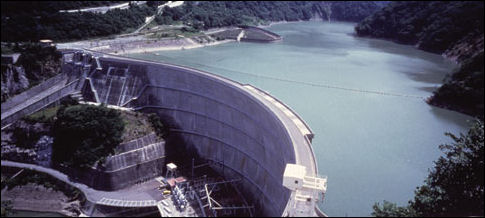
Hydro Power
Isahaya Bay Project
The Isahaya Bay project is a seven-kilometer-long dike with a series of gates that was used to reclaim land from the Ariake Sea in Nagasaki Prefecture.
In April 1997, with a cascade of steel plates dropping into the sea, Isahaya Bay off the Ariake Sea was sealed off by a dike so the water could be drained and the land could be reclaimed for farms. Launched in 1989, the project took almost a decade to complete and produced 672 hectares of farmland (13 times the size of Tokyo Disneyland) at a cost $2.5 billion. From the start the project was controversial with concerns over high costs, limited benefit (only 41 individuals and corporations use the reclaimed land), and environmental concerns.
It took years for the farmland to become productive as time was needed for the salt to drain out. By the time the land was finally being fully utilized fisherman and sea weed producers were complaining that dike was affecting their catches and harvests. Some studies found that the dike disrupted currents that brought nutrients to fisheries and seaweed growing areas. In 2010, the government mulled over reopening the gates to help fishermen and sea weed growers.
In December 2010, a Fukuoka high court acting on a suit brought by Ariake Sea fishermen ruled that the gates of Isahaya Bay projects should be opened, saying the closure was illegal. The court acknowledged research that the project damaged local fisheries and said opening the gates would not hurt agriculture that much or increase flood risks. Farmers whose land was affected were obviously upset by the decision. They argued that opening the gates will damage agricultural land behind the gates by flooding it or hurting it with salt intrusion of seawater into groundwater below the land.
A week later the government of Prime Minister Naoto Kan said it wouldn’t appeal the Fukuoka high court ruling ordering the opening of the gates of Isahaya Bay projects. Kan had campaigned against the project in the 1990s. The decision essentially means that $2.5 billion was spent for naught. Many viewed Kan’s decision as being a political one. The farm ministry said it wasn’t even consulted. According to the high court ruling the gates have to opened by 2017 and are expected to be opened in 2012 after two years is spent to prevent damage to farming.

flood control river locks
Support of Unnecessary Public Works Projects in Japan
Projects have been built because construction companies and bureaucrats could get the money to finances them not because the projects were useful. Supporting the projects are a half a million construction companies, 70,000 bureaucrats in various construction agencies and pork barrel politicians who owe their careers to construction money.
Many ordinary Japanese, especially in rural areas, support the projects because they benefit financially from all the money floating around, or they have an unquestioning trust in government. In many places farmers and fishermen are dependent on part time work linked with public work projects to make ends meet.
The LDP has dominated Japanese politics in part by providing pork barrel subsidies and holding on to rock solid support in rural areas by funneling money from the cities into the countryside and supporting generous public works projects.
Fighting Unnecessary Public Works Projects in Japan
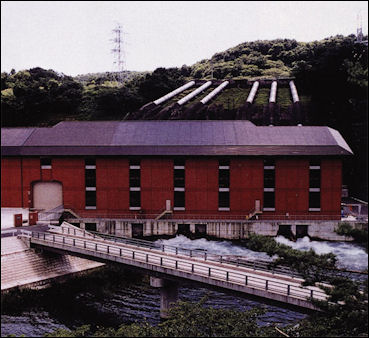
hydro power Money taken from the so-called construction state could be used to fund more useful project such as the development of new technologies.
In the early 2000s, Prime Minister Juichiro Koizumi tried to change the LPD's traditional pork barrel politics and eliminate bridges-to-nowhere public works projects. He talked about diverting tax revenues earmarked for road construction to other purposes and reform the four road-related public corporations. But despite some progress, pork barrel politics continued, although a shadow of its former self.
Yasuo Tanaka — an acclaimed novelist and former journalist known for a column about the sexual adventures of a single man in Tokyo — was elected as governor of Nagano prefecture in October 2000 on a platform of reform the political system and fighting pork-barrel projects. Tanaka has said he wanted to create “the Sweden of Japan” in Nagano and criticized the bureaucracy for racking up such huge debts to secure and host the Olympics. When he took office he tried to live up to his pronouncements. After halting construction of a two expensive and controversial dam projects he was ousted by the local legislature, which had traditionally been supported by the construction industry. Tanaka ran for office again and was reelected with 65 percent of the vote. He was defeated in an election in August 2006.
Grassroots citizen movement in Tokushima Prefecture have caused the government to put large dam projects on hold.
Minshuto has promised to slash public works spending by at least 30 percent.
Local Government and Public Works in Japan
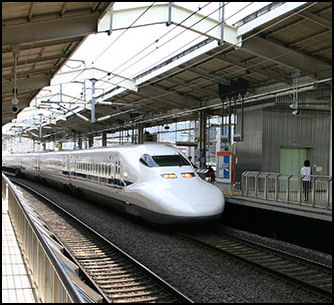
proposed new shinkansen
lines are very expensive In recent years there has been a drive to decentralize power from the central government to local governments and one the biggest steps to making this happen is freeing the local government from the burden of financing extensive public works projects such as dams, expressways and Shinkansen rail lines dreamed up by the central government.
Large government projects, the central government pays two thirds and local governments pay a third. The system was set up under the notion that people who benefit from projects should pay for them. But in many cases the costs of projects outweigh the benefits.
Local governments complain they are “slaves” to the national government and their requests. Sometimes they are required to come up with billion of dollars to fund projects like highways, ports and train lines that were largely hatched without their consent by the national government
The Niigata prefectural government said it may defy a request by the central government to increase its spending on a Shinkansen project by ¥22 billion, arguing it would be too much of strain to come up with the extra money.
Efforts to Cut Public Works Programs Such a Yamba Dam
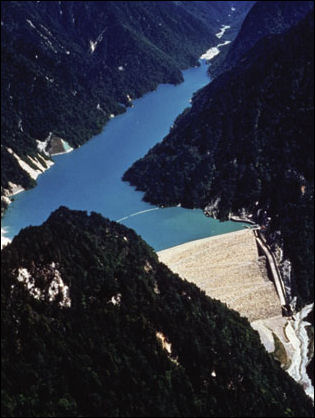
Cutting expensive public works projects that were deemed a waste of money was high priority of the new Democratic Party of Japan government that came to power in 2009. The project that got the most attention form cost cutters was the $4.6 billion Yamba dam in Gunma Prefecture, an expensive project that was launched in 1952 and had few benefits other than flood control and providing water and irrigation to an area near Tokyo that didn’t really need it. The only problem was that $3.2 billion had already been spent on it, hundreds of people had already been relocated and the project was 80 percent done. Eighty-seven local dam projects were examined with the government freezing 48 out if 56 projects currently being carried out. In December 2009, 30 dam projects were singled out for close scrutiny with the aim of closing down ones deemed unnecessary.
In December 2011, the Yomiuri Shimbun reported: “After more than two years of turmoil, the government has finally settled the issue of whether to cancel or resume construction of the Yamba Dam in Gunma Prefecture. Land, Infrastructure, Transport and Tourism Minister Takeshi Maeda has at last decided to resume construction of the dam in Naganoharamachi. The government will earmark costs for building the main structure, funds for which had been frozen, in the fiscal 2012 budget. The decision was based on a reexamination of the project by the ministry, in which it judged "construction of the dam is most desirable" in terms of flood control and water utilization effects as well as project costs. [Source: Yomiuri Shimbun, Dec. 23, 2011]
“Under the slogan "from concrete to people," the Democratic Party of Japan included cancellation of the Yamba Dam project in its manifesto for the 2009 House of Representatives election, which brought about the DPJ-led administration. Seiji Maehara, now the DPJ's Policy Research Committee chair, became infrastructure minister after the 2009 election. Based on the manifesto's promise, he forcibly terminated the dam's construction without any consultation with local governments involved.
“In the face of strong opposition by residents and local governments, then Land, Infrastructure, Transport and Tourism Minister Sumio Mabuchi in autumn 2010 effectively nullified Maehara's decision on the project. Subsequently, the ministry had been reexamining the project to decide whether the dam should be constructed.
“Already 80 percent of the total project costs have been spent on related works, such as construction of roads to replace ones that will become unusable. If the project had been axed, the government would have had to return funds to Tokyo and five other prefectures of the Tonegawa basin, which had paid out more than half of these costs.
“Since the Democratic Party of Japan came to power in 2009, infrastructure ministers have decided to continue 14 and suspend six of the 83 dam projects reviewed by their ministry and related municipalities. The ministers' decisions on the 20 projects have matched the conclusions of the reviews. The Land, Infrastructure, Transport and Tourism Ministry is still reviewing 63 dam projects. The Yamba Dam case was the only one in which the ministry and the DPJ had disagreed. [Source: Yomiuri Shimbun, December 24, 2011]
Overseas Public Works Projects
With infrastructure projects drying up at home the government is looking more to win large overseas projects. With this goal in mind the Japanese government has stepped up diplomatic and lobbying efforts by the prime minister and senior government officials. Among the sectors that are being promoted are high speed railroads and nuclear power plants, The schemes also involve using loans from the Japan Bank for International Cooperation, set up to help projects in developing countries, for project in developed countries.
The projects being pursued include high-speed railroads in the United States, water treatment facilities in Saudi Arabia and nuclear power plants in Vietnam and Turkey. These plans have been dealt several set backs. Unrest in the Middle East and Africa upset plans there. Fallout from the earthquake and tsunami in 2011 and Fukushima nuclear power plant crisis raised questions about Japan’s plans to build nuclear power plants abroad.
See High-Speed Train Deals
Image Sources: 1) 4) 5) 6) Ray Kinnane 2) Tepco 3) Japan Visitors 7) Benoa.net
Dams and Hydro Power TEPCO
Text Sources: New York Times, Washington Post, Los Angeles Times, Daily Yomiuri, Times of London, Japan National Tourist Organization (JNTO), National Geographic, The New Yorker, Time, Newsweek, Reuters, AP, Lonely Planet Guides, Compton’s Encyclopedia and various books and other publications.
Last updated July 2012
